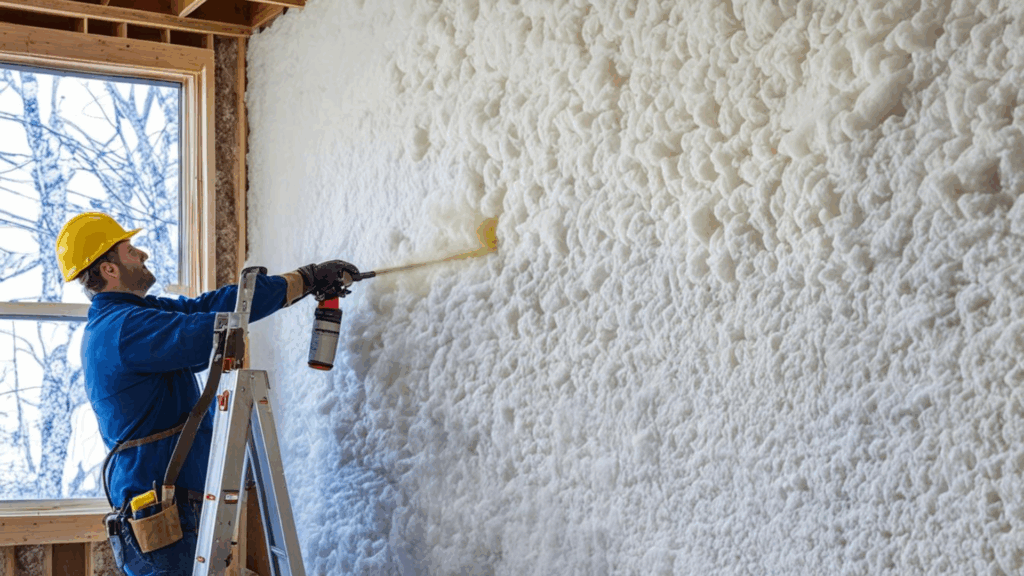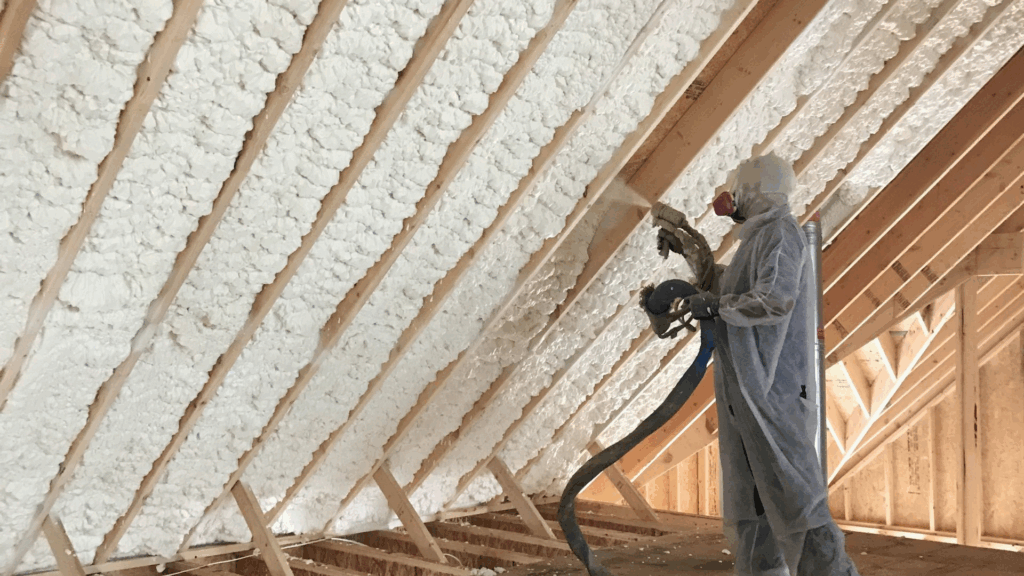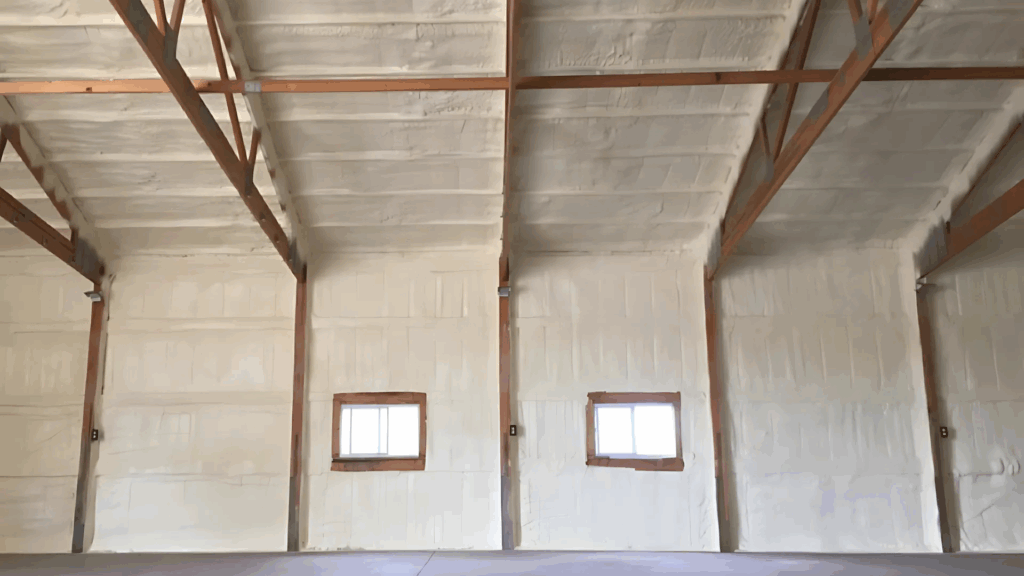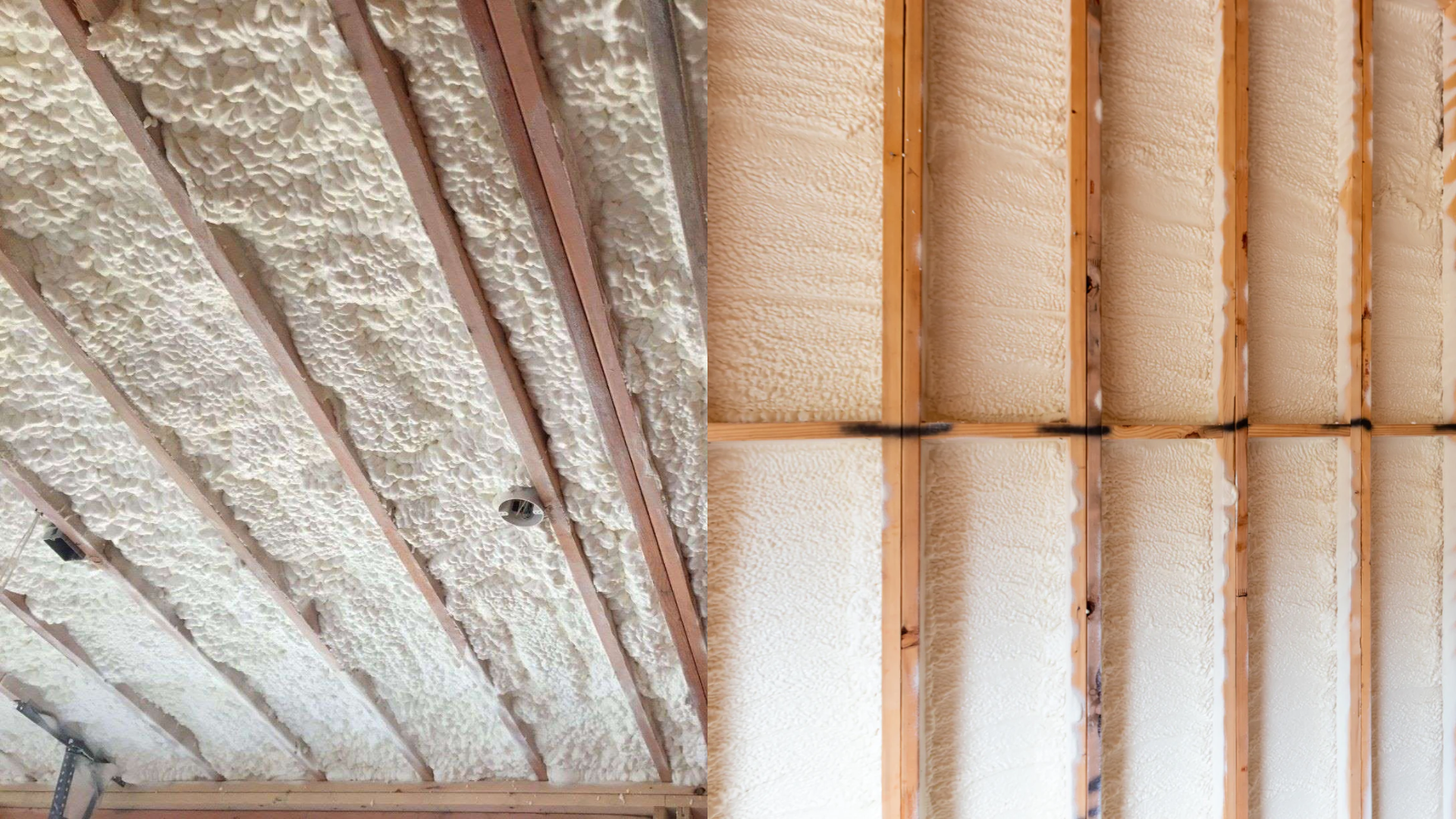When I decided to insulate my home, I quickly realized that selecting the right material was crucial for improving energy efficiency, comfort, and long-term savings.
Spray foam insulation, available in two main types, open-cell and closed-cell, has become a popular option due to its effectiveness.
Each type offers unique benefits, and understanding these differences is key to making the best choice for your home.
In this guide, I’ll talk about the unique benefits and differences between open-cell and closed-cell spray foam insulation, helping you make an informed decision based on your specific needs.
I’ll cover:
- Open cell spray foam: Pros and cons
- Closed-cell spray foam: Pros and cons
- Key differences between the two
- Factors to consider when choosing the best insulation for your home
What Is Spray Foam Insulation?

Spray foam insulation is a highly effective, modern insulation material that expands when applied to fill gaps, cracks, and cavities in walls, ceilings, and floors.
Unlike traditional insulation options like fiberglass, spray foam creates an airtight seal that significantly reduces air leaks and improves energy efficiency.
Once applied, it forms a solid, seamless barrier that helps maintain consistent indoor temperatures, keeping your home warmer in the winter and cooler in the summer.
Additionally, spray foam helps control moisture, preventing mold growth and protecting your home from potential water damage.
Its ability to expand and conform to irregular spaces makes it ideal for both new construction and renovation projects.
As a result, spray foam insulation not only boosts energy efficiency but also enhances indoor comfort.
How Spray Foam Insulation Works?
Spray foam insulation is an effective way to enhance your home’s energy efficiency and comfort. This is how it works:
- Expands upon application: Spray foam fills gaps, cracks, and cavities in walls, ceilings, and floors as soon as it is sprayed.
- Creates an airtight seal: The foam expands and hardens, forming a seamless barrier that prevents air leaks.
- Ideal for irregular spaces: The expansion allows the foam to reach and seal hard-to-reach or irregular spaces, perfect for both new builds and renovations.
- Reduces heat transfer: The foam’s structure helps maintain consistent indoor temperatures, keeping your space warmer in winter and cooler in summer.
- Prevents moisture damage: It provides moisture resistance, helping to prevent mold growth and water damage.
Understanding Open Cell Spray Foam Insulation

Open-cell spray foam is made up of cells that are not completely closed, giving it a sponge-like texture.
This unique structure allows the foam to expand significantly once applied, enabling it to fill irregular gaps and spaces effectively.
The foam’s expansion helps create a seamless insulation barrier, providing excellent coverage even in hard-to-reach areas. Its lightweight nature makes it ideal for use in interior applications like walls, ceilings, and attics.
Open-cell foam has a lower density compared to closed-cell foam, which makes it more flexible and able to accommodate slight building movements.
However, open-cell foam is not suitable for areas exposed to moisture, as it is more permeable to water vapor, which can lead to potential issues in humid environments.
Pros and Cons of Open Cell Spray Foam
Open-cell spray foam offers cost-effective insulation, great soundproofing, and flexibility for interior spaces, but it has a lower R-value, is less moisture-resistant, and provides minimal structural support.
| Pros | Cons |
|---|---|
| Cost-effective for large areas | Lower R-value compared to closed-cell |
| Excellent soundproofing qualities | Not suitable for areas prone to moisture |
| Good for interior applications | Less rigid, offering minimal structural support |
| Expands to fill irregular spaces | Not ideal for high moisture areas |
Overview of Closed-Cell Spray Foam Insulation

Closed-cell spray foam is composed of tightly packed cells that are fully encapsulated, creating a rigid and dense material.
This unique structure helps the foam maintain its shape, offering superior insulation and moisture resistance.
When applied, it expands to fill cavities, forming a seamless, solid barrier that effectively seals off air leaks and prevents water infiltration.
The dense nature of closed-cell foam gives it a higher R-value, typically between 6.0 and 7.0 per inch of thickness, making it one of the most efficient insulation materials available.
Additionally, the closed cells provide a vapor barrier, preventing moisture from entering and potentially causing mold or mildew growth.
This makes closed-cell foam ideal for use in areas prone to high humidity or water exposure, such as basements, roofs, and exterior walls.
Pros and Cons of Closed-Cell Spray Foam
Closed-cell spray foam offers superior insulation, moisture resistance, and structural strength, but it comes with a higher cost, reduced soundproofing capabilities, and limited flexibility.
| Pros | Cons |
|---|---|
| Higher R-value for superior insulation | Higher cost due to material and installation |
| Acts as a vapor barrier, preventing moisture issues | Less effective at soundproofing |
| Adds structural strength to buildings | A rigid structure may not accommodate building movement |
| Suitable for exterior applications | Not as flexible as open-cell foam |
Key Differences Between Open Cell and Closed Cell Spray Foam
Open cell foam is lightweight, flexible, and cost-effective, while closed cell foam is denser, more rigid, provides higher insulation, and offers better moisture resistance.
1. Density
Open-cell spray foam has a low density of about 0.5 lb/ft³, making it lightweight and easy to handle. This lower density allows the foam to expand significantly, filling irregular spaces and providing a seamless insulation barrier.
Closed-cell spray foam has a higher density, typically around 2 lb/ft³, which makes it denser and more rigid than open-cell foam.
This added density enhances its insulating properties, providing greater structural support and durability.
2. R-Value
Open-cell foam offers an R-value of approximately 3.5 to 3.8 per inch of thickness. While this provides moderate thermal insulation, it’s lower compared to closed-cell foam.
This makes open-cell foam suitable for areas where extreme insulation isn’t necessary, such as interior walls and ceilings, where reducing air leakage is still important.
Closed-cell spray foam has a significantly higher R-value, ranging from 6.0 to 7.0 per inch of thickness. This higher R-value makes it a superior option for areas where high insulation performance is required.
It is ideal for exterior applications and areas with extreme temperature fluctuations, offering better thermal resistance and energy efficiency.
3. Moisture Resistance
Open-cell foam is more permeable to moisture, meaning it can absorb water if exposed to high humidity or leaks. This makes it unsuitable for areas prone to moisture, such as basements or roofs.
Closed-cell foam excels in moisture resistance, forming a solid vapor barrier that prevents water infiltration.
Its dense structure blocks moisture from penetrating, making it ideal for high-humidity areas like basements, roofs, or crawl spaces.
4. Flexibility
Open-cell foam is more flexible compared to closed-cell foam, which allows it to expand and contract slightly with building shifts.
This flexibility is ideal for interior applications like walls and ceilings, where the structure may experience movement.
It accommodates these shifts without cracking, ensuring the insulation remains intact over time.
Closed-cell foam is rigid and less flexible, providing structural support to buildings.
While this rigidity adds strength and durability, it means the foam may not be as accommodating to settling or shifting structures.
5. Sound Absorption
Open-cell foam is known for its excellent soundproofing abilities. The sponge-like structure of open-cell foam absorbs sound waves, significantly reducing noise transmission between rooms or from outside sources.
This makes it a great option for spaces where noise control is important, such as bedrooms, home theaters, or offices.
Closed-cell foam provides some noise reduction but is not as effective as open-cell foam in soundproofing applications.
Its rigid structure offers limited sound absorption, making it less ideal for spaces where quietness and noise reduction are priorities.
6. Cost
Open-cell spray foam is generally more affordable than closed-cell foam due to its lower density and simpler installation process.
Its cost-effective nature makes it a popular choice for large areas like interior walls or attics, where extreme moisture protection or a high R-value is not necessary.
Closed-cell spray foam is more expensive than open-cell foam due to its higher density, increased R-value, and superior moisture resistance.
However, the higher cost is often justified by its durability and enhanced insulation performance, especially in areas that require a high level of energy efficiency, structural support, and moisture protection.
Comparison: Open Cell and Closed Cell Spray Foam
Open-cell foam is ideal for interior applications where flexibility and soundproofing are important, while closed-cell foam is better suited for exterior and moisture-prone areas due to its higher R-value and moisture resistance.
| Feature | Open Cell Foam | Closed Cell Foam |
|---|---|---|
| Density | ~0.5 lb/ft³ | ~2 lb/ft³ or more |
| R-Value | 3.5–3.8 per inch | 6.0–7.0 per inch |
| Moisture Resistance | Low | High |
| Sound Absorption | Excellent | Moderate |
| Flexibility | Moderate | Low |
| Cost | Generally less expensive | Higher due to material and labor costs |
| Structural Support | Minimal | Significant |
Which Is Right for You?
Choosing between open-cell and closed-cell spray foam depends on your specific needs and the environment of the space you’re insulating.
Open-cell foam is ideal for interior applications where soundproofing, flexibility, and affordability are priorities. It’s well-suited for areas like walls, ceilings, and attics where moisture is not a concern.
On the other hand, closed-cell foam is the better option for exterior applications or areas exposed to moisture, such as basements or roofs.
Its higher R-value, moisture resistance, and structural strength make it perfect for high-performance insulation, although it comes at a higher cost.
Consider your budget, the insulation requirements, and the moisture conditions of the space when making your decision.
Conclusion
After looking at the differences between open-cell and closed-cell spray foam, I realize that choosing the right insulation depends on your specific needs.
If you’re insulating interior spaces where soundproofing and flexibility matter, open-cell foam is an affordable and effective option. It provides sound insulation and expands easily to fill irregular spaces.
However, if you’re working in areas exposed to moisture or need a higher R-value, such as exterior walls or roofs, closed-cell foam is the better choice.
Ultimately, you need to consider the cost, moisture conditions, and insulation requirements of your project to make the best decision.
Ready to get started? Contact a spray foam insulation expert today to discuss the best option for your home.

